
The Museum Haus Dix or House Museum Dix is the former studio and home of the German painter Otto Dix in Hemmenhofen, a district of the municipality of Gaienhofen, and also an establishment of the Kunstmuseum Stuttgart. [1]

The Museum Haus Dix or House Museum Dix is the former studio and home of the German painter Otto Dix in Hemmenhofen, a district of the municipality of Gaienhofen, and also an establishment of the Kunstmuseum Stuttgart. [1]

After Otto Dix lost his chair at the Dresden Art Academy in 1933, he and his family initially found accommodation in Randegg Castle until 1936. Thanks to an inheritance, Martha Dix, Otto Dix's wife, was able to purchase a plot of land on a hill on the Untersee, the east part of the Lake Constance, in the Höri peninsula in Hemmenhofen, to build a house there. The house was designed according to plans by the Dresden architect Arnulf Schelcher. In 1936 the family moved into their new home opposite the Swiss bank.
The studio windows on the east side, the surrounding balcony and numerous windows with a view of the lake are characteristic of the generously designed three-storey house with almost 400 m2 of floor space. The kitchen, dining and living rooms as well as the music room are on the ground floor. The first floor was chosen for Otto Dix's studio and Martha Dix's salon; for the rooms of the children Nelly (1923–1955), Ursus (1927–2002) and Jan Dix (1928–2019) the second floor. Otto Dix lived and worked here until his death, in 1969, and increasingly devoted his work to the landscape of the Lake Constance. Martha Dix stayed until 1979 before moving to the south of France to live with her granddaughter Bettina until her death in 1985.
Two years before her death, the widow handed over the house in Hemmenhofen, which belonged to her all her life, and the rights to her husband's estate, to the Otto Dix Foundation, which was founded in 1983, and whose partners were her two sons and granddaughter Bettina Dix-Pfefferkorn. [2]
The house and garden were registered in the Baden-Württemberg monuments book in 2005.
The museum was redesigned by the Kunstmuseum Stuttgart and funded by the Otto-Dix-Haus-Stiftung, refurbished in accordance with listed buildings and equipped as a museum. In 2013 the association handed over the house to the Kunstmuseum Stuttgart, which now owns one of the most important Dix collections. In June 2013 it reopened as the Museum Haus Dix, a branch of the Kunstmuseum Stuttgart. [3]
The focus of the permanent exhibition is the family life of the artist household. Paintings and graphics by Otto Dix are shown in annually changing exhibitions. Images on the walls refer to the works that once hung in the house and can now be found in various museums and collections around the world. The cellar of the house can be visited during guided tours, the walls of which were painted by Otto Dix and some of his guests at a carnival festival in 1966. A media guide leads through the individual rooms and provides information on works of art and the family life of the Dix family. An eight hectare garden with terraces and a museum café complete the ensemble.
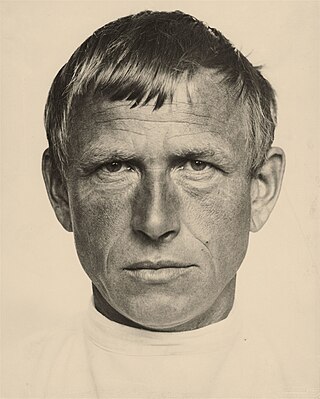
Wilhelm Heinrich Otto Dix was a German painter and printmaker, noted for his ruthless and harshly realistic depictions of German society during the Weimar Republic and the brutality of war. Along with George Grosz and Max Beckmann, he is widely considered one of the most important artists of the Neue Sachlichkeit.
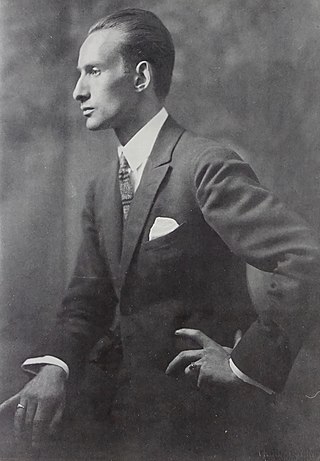
Christian Schad was a German painter and photographer. He was associated with the Dada and the New Objectivity movements. Considered as a group, Schad's portraits form an extraordinary record of life in Vienna and Berlin in the years following World War I.

Elfriede Lohse-Wächtler was a German painter of the avant-garde whose works were banned as "degenerate art", and in some cases destroyed, in Nazi Germany. She became mentally ill and was murdered in a former psychiatric institution at Sonnenstein castle in Pirna under Action T4, a forced euthanasia program of Nazi Germany. Since 2000, a memorial center for the T4 program in the house commemorates her life and work in a permanent exhibition.

Gaienhofen is a municipality in the district of Konstanz in Baden-Württemberg in Germany. It is located at the border with Switzerland.

The Kunstmuseum Basel houses the oldest public art collection in the world and is generally considered to be the most important museum of art in Switzerland. It is listed as a Swiss heritage site of national significance.
Caro Niederer is a contemporary artist who lives and works in Zürich.
Gregor Schneider is a German artist. His projects have proven controversial and provoked intense discussions. In 2001, he was awarded the Golden Lion at the Venice Biennale for his infamous work Totes Haus u r exhibited at the German Pavilion.

The Bucerius Kunst Forum is an international exhibition centre in Hamburg, Germany, founded in 2002 through the ZEIT-Stiftung Ebelin und Gerd Bucerius foundation. It is named after Gerd Bucerius and his wife, and located directly beside the Hamburg Rathaus. The exhibition centre shows 3 - 4 exhibitions per year, in co-operation with other museums and collections. The exhibition centre participates in the Long Night of Museums.
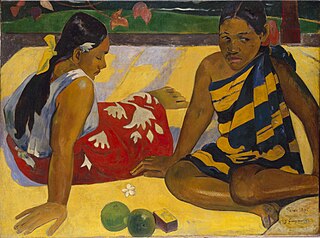
The Galerie Neue Meister in Dresden, Germany, displays around 300 paintings from the 19th century until today, including works from Otto Dix, Edgar Degas, Vincent van Gogh and Claude Monet. The gallery also exhibits a number of sculptures from the Dresden Sculpture Collection from the same period. The museum's collection grew out of the Old Masters Gallery, for which contemporary works were increasingly purchased after 1843.

Dörte Gatermann is a German architect who is best known for designing the Triangle Tower in Cologne.

Metropolis is a triptych painting by the German artist Otto Dix, executed between 1927 and 1928. The painting depicts three nighttime city scenes from the Weimar Republic. The painting belongs to the Kunstmuseum Stuttgart since it was bought from the artist's estate in 1972.

The Drei-Farben-Haus is Stuttgart's largest and oldest brothel. It is located in Am Bebenhäuser Hof in the lively downtown district between the end of Königstraße and the market square, which contains Stuttgart City Hall.
Rita Rohlfing is a German painter, photographer and installation artist.

The Trench, but earlier known as Das Kriegsbild or simply Der Krieg, was an oil painting by the German artist Otto Dix. The large painting was made from 1920 to 1923, one of several anti-war works by Dix in the 1920s inspired by his experience of trench warfare in the First World War.

The Otto-Dix-Haus or Otto Dix House in Gera is a museum located in the birth house of the German painter Otto Dix, at Mohrenplatz 4. The building became an art museum in 1991, with exhibits on two floors. for the celebrations of the 100th birthday of Otto Dix. The museum, with the Orangerie, is part of the Kunstsammlung Gera.
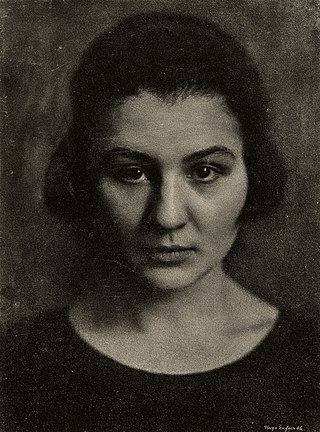
Martha Dix was a German goldsmith and silversmith, as well as the wife of the painter Otto Dix. She was portrayed many times by her husband from 1921 to 1933. A well-known double portrait of the couple appears in the photographer August Sander's portfolio People of the 20th Century (1925).
Prague Street is an oil-and-collage-on-canvas painting by the German painter Otto Dix, executed in 1920, which depicts the Prager Straße in Dresden, shortly after the First World War. It is held at the Kunstmuseum Stuttgart, formerly known as Galerie der Stadt.

Volker Staab is a German architect.
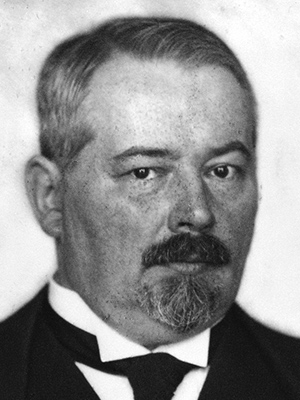
Otto Friedrich Gussmann was a German decorative artist, designer, and art professor.